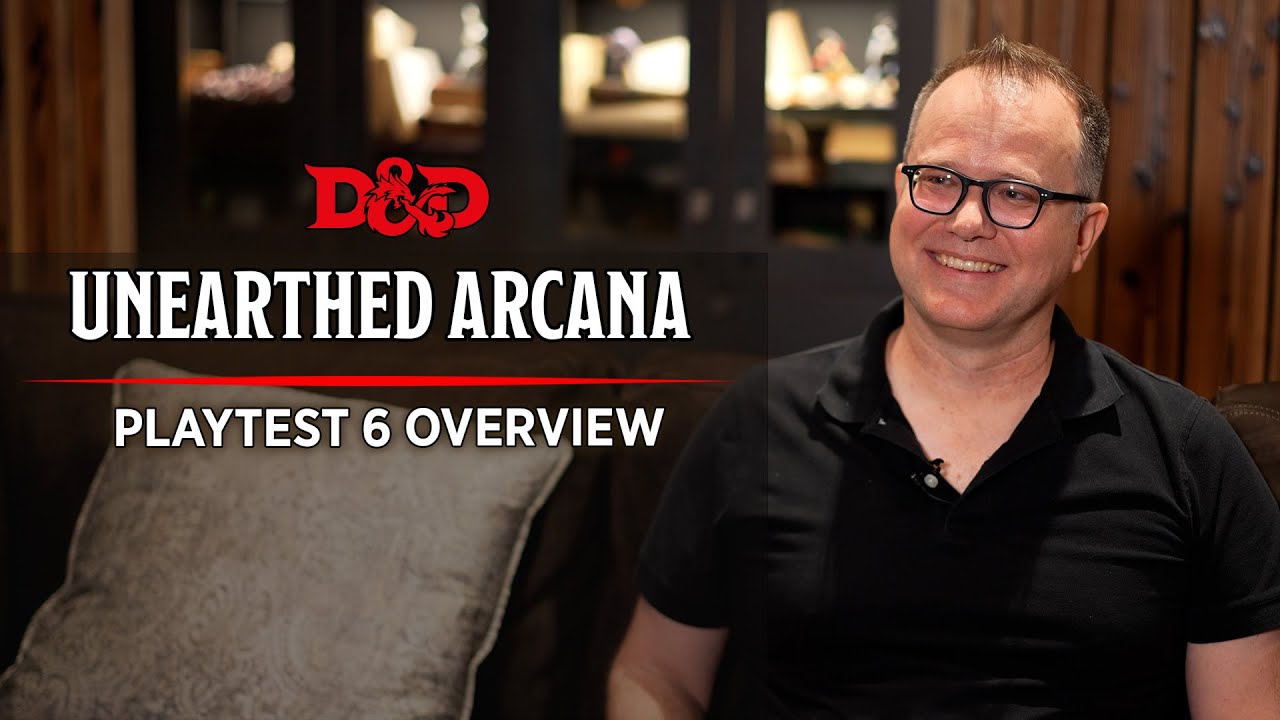Crawford says it’s the biggest yet, with 7 classes (Experts: Ranger, Rogue, Bard; Priests: Cleric, Paladin, and Druid; and Monk confirmed), spells and weapon mastery tweaks, capstones back at lvl20 (epic boons will be pushed to another UA), and subclass progression reverted to the 2014 cadence after lvl3. Notably, rogues are seemingly getting another feature at lvl5 to make up for the fact that they get very nothing from their subclass between 3 and 9.



@mertag770 @SkyyHigh Maybe they are trying to balance multiclassing? If everyone can get their subclass choice at level 1 and if you decide to dip into another you will be way too op. I’m curious if they will change multiclassing rules in the playtest.
Oh for sure that’s why they’re doing it. Subclasses require a bucket of features when you first get them in order to substantially differentiate themselves from the main class, which means it’s a big power jump. All the most common dips in 5e (warlock, cleric, sorcerer) are classes that get their subclass at 1st level.
@MartyMart I think that’s the reasoning. I do think the issue tends to be overblown though, and in lieu of a new edition, I’d rather see more options for multiclassing or prestige classes since you can only play a pure class so many times before it feels very same-y.
How often are you making new characters that “playing a class start to feel same-y”?
I typically only get to make a new character once every few months, and pretty much never more than three times a year (unless I get really unlucky…or I’m playing CP2020). What are you doing different?
I play with 2 groups and one group does a main campaign and then smaller campaigns every n weeks so that way the DM has time to prep, adjust plans, and it’s lower stakes if someone misses. Add in the occasional one shot or two and you churn through the interesting subclasses quickly.
Subclasses in 5e functionally replaced 3.5 prestige classes. They specialize a character with specific skillsets beyond those of the core class. Instead of needing certain skill/feat/etc requisites you just get one upon reaching a certain level in the class, which is in line with 5e being (in simple terms) “like 3.5 but streamlined and more new-user friendly.”
I think subclasses are more inline with variant classes in 3.5. You had a cloistered cleric vs cleric and they had 2 domains. You had the totem barbarians, the divine bard vs the normal bard. Prestige classes were far more transformative than subclasses and subclasses don’t feel the same to me in 5e.
Not really. They even tried prestige classes in 5e in an old Unearthed Arcana, and the homebrew community has taken that and turned out some good stuff with it. Unfortunately that particular UA didn’t review well, and WotC as usual threw the baby out with the bathwater and decided it meant that prestige classes are a dud of an idea entirely.
Prestige Classes in 5e could be more like (non-multiclass) Archetypes in Pathfinder 2e. They’re extra things that you tack on to your character to specialise in an unusual area that isn’t related to your core class’s competency. It’s about broadening what you can do, rather than deepening it in the way a lot of subclasses do.
That’s because they were.
With subclasses, prestige classes become redundant on top of fighting for levels you need to unlock higher level abilities.
If you want things like prestige classes and multiclassing to not fight single-class characters at the design level you need to push single-class abilities away from the high levels of the class, which just leaves them empty and boring. At which point, why bother playing at high levels? Why bother single-classing ever?
You just end up removing choice by turning what should be a valid decision into a false-choice that does nothing but penalize you.
3rd edition, for example, should have cut the base classes off at level 5 or 10. The way the game was designed, there was no need for them past that point since everyone ended up taking either alternative base-class levels or prestige class levels.
With subclasses, you either need to embrace dipping and only define the base classes to level 15, getting rid of EVERYTHING that comes out in levels 16-20 (which kills a sacred cow and will make some people, like me, very un-happy), or you need to retire multiclassing, or at least try to balance it.
That means no more subclassing at 1st level and, preferably, standardizing subclass ability levels. Why people are against that I have no idea. Who cares if everyone gets their 2nd subclass ability at level 7 regardless of class?
Honestly, the only reason I can think of to want them at different levels is purely for power-gaming. The ability to plan out “a build” that is hands-down better than other builds because you get to squeeze in one more ability than other builds.
Seriously, what are the other reasons? The valid reasons?
This makes sense, though as a cleric aficionado reading through the first UA with cleric rules made me reflexively wince several times. From a balance point of view it is much more simplified to have all classes using the same general template for progression, and the multiclassing powergamer “dip” concerns are valid for stacking benefits at first level.